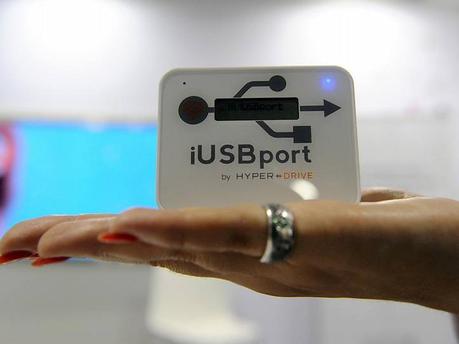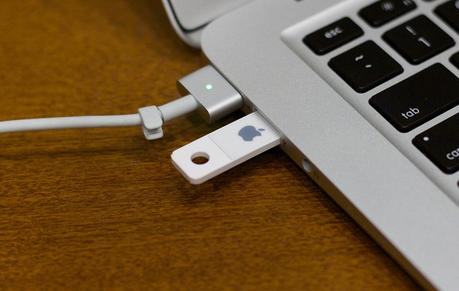USB flash drives or memory sticks are a great medium for data traveling and are being widely used. The reason behind such a wide acceptance is its mobility and high storage capacity.
So, if you are not aware of how to use a flash drive or a memory stick? Then what are you waiting for? Just read further.
In this article, we will make you aware of the things which will equip you with the knowledge of using a flash drive. So, let’s get started:
What is a USB flash drive?
According to Wikipedia,
A USB flash drive, also known under a variety of other names, is a data storage device that includes flash memory with an integrated USB interface.
USB flash drives are much smaller in size than the optical discs and are very convenient to carry and easily rewritable. In recent times, flash drives of up to 1 TB storage capacity were announced and are available. The flash drives are cost-efficient and very reliable.
As per the statistics are concerned, some flash drive or memory stick allows up to 100, 000 write/erase cycles or 10 – year shelf storage time depending upon the type of memory chip used.

Flash drives certainly have an advantage over the CDs or optical drives because USB flash drives are immune to electromagnetic interface and are not harmed even by the surface scratches. This is one of the prominent factors which led to the obsolesce of floppy discs or optical drives.
USB flash drives are supported widely irrespective of the operating systems. In present times USB version 3.0 is introduced which transfers data at a relatively high speed than the predecessor of it (USB 2.0).
Here are some of the fast facts about USB flash drives:
1: USB flash drives were invented by Amir Ban, Dov Moran, and Oran Ogden, all of them were associated with M-Systems in April 1999. However, the fact of the invention of USB flash drives is associated with patent controversy.
2: Trek Technology and IBM were the very first firm which began selling the USB drives commercially in the year 2000. The product was named “Thumb drives”.
3: The second generation, USB 2.0 has 480 Mbit/s as the transfer rate. The transfer rate dramatically improved in the next generation (USB 3.0) with a transfer rate of 5 Gbit/s.
4: Most of the flash drives support FAT32 or exFAT file systems.
How to use a flash drive or a memory stick?

To use a flash drive or memory stick, the prerequisites are a computer system, be it a laptop or a desktop, a flash drive or a memory stick and some files to transfer.
If you are equipped with all these, then you can certainly proceed further. Additionally, there is one thing to take a note while transferring files or folders is that you should have enough memory space on your flash drive or the memory stick to hold the stuff.
Step #1: As the very first step, you will have to plug in your flash drive or memory stick to one of the USB ports.
If you are using a desktop, then the USB ports are usually located at the CPU of the system, and if you are using a laptop then you can easily find a USB port on either side of your laptop.
If you are done with the mentioned, then you are all set to go to the next step.
Step #2: Once you have plugged in the flash drive or the memory stick to one of the USB ports then now, all that you need is to locate the device.
In order to do so, you can go to “My Computer” and under the “Devices with Removable Storage” section; you will see the removable drive (in the case of Windows OS). In case, if you are using MAC then wait for your device folder to appear on the desktop screen.
Step #3: Now, in this step, you need to locate the files or folders which you want to transfer to the memory stick or flash drive which you have plugged in.
Once you have found the desired file or folder which you want to store on the flash drive, then you need to copy the desired file or folder. To do so, you need to right-click on the folder or file and then from the menu; you have to select “Copy”.
After this, all that you require is to go to the removable drive and then paste the file or folder which you have just copied. This will start transferring the files, and once the process is complete, you will be done with the required.
You can also consider dragging and dropping the files from the source location to the desired removable drive.
Alternatively, if you are using Windows operating system, then for sending the files directly to the flash drive, you can also choose the option “Send to” and after that, you have to select the removable drive. This will directly send the files to the desired removable drive.
Step #4: As the last step, you need to eject the removable flash drive. You can do so by right-clicking on the flash drive icon and then select the “Eject” option from the follow-up menu. Now, you can safely remove the flash drive or the memory stick from the USB port.
Wrapping up.
This wrapping up section brings us to the end of this tutorial cum guide on “How to use a flash drive or a memory stick?” We hope that we were efficient enough to satisfy your curiosity about this topic.
We firmly believe that we have left no stone unturned while getting into the nitty-gritty of the topic and making you understand the entire concept of it.
But if you still have any query regarding using a flash drive or memory stick then feel free to drop your query via comments below. We will try our level best to resolve that.
Moreover, if you found this article helpful and worthy, do show your love by sharing it socially.
Thank you for crossing by and giving it a read.

